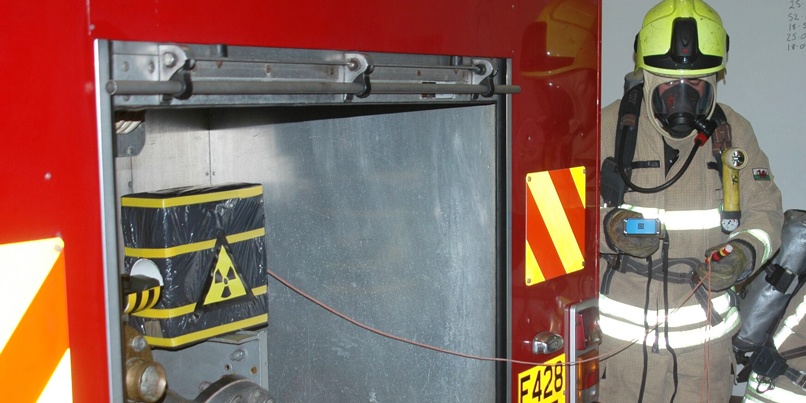
The events of 9/11, and more recent terrorist incidents closer to home, have been pivotal in transforming the way that UK emergency services and agencies detect, prevent and respond to large-scale emergencies.
A well-equipped and highly-trained Fire and Rescue Service is essential to ensure the UK is prepared to respond with speed and certainty to any chemical incident, whether it be deliberate or accidental.
But while it's possible to replicate the risks of certain hazards in a controlled environment, it can be a more complex challenge to train first responders for the "invisible threat" of a radiation incident.
In this blog post Dai Swann, Head of Response for Pembrokeshire and Radiation Supervisor for the Mid and West Wales' Rescue Service, talks about the introduction of simulated radiation safety training for their crews.
As he explains, the results have been "spectacular."
Emergency response crews typically have access to two vital pieces of radiation detector equipment to enable them to identify the nature and extent of a radiation risk. One is the Mirion/RADOS RDS-200 Universal Survey Meter, which measures the levels of ionizing radiation, and the other is the Thermo Electronic Personal Dosimeter Mk2 which monitors the user's exposure to the ionizing radiation source.
While crews within the Mid and West Wales Fire and Rescue Service were familiar with the operation of these two essential items of equipment through traditional 'make pretend' simulation training, Swann had observed what he describes as "a gap in their preparedness."
"Whenever we exercised, the instruments would register background radiation, which is thankfully practically zero - exactly how we want things to be - but this lacked authenticity for practical training."
While an instructor could provide 'exercise values' as the team completed the task, the crews were reliant on the instructor to give them the key information to make their decisions.
The end result, says Swann, was that the safety crews were not learning how to rely on their instrumentation.
The solution to this training 'gap' was to introduce the use of Argon's radiation detector simulators that use safe, environmentally friendly technology to simulate the conditions of real-life radiation hazards.
In one operational scenario, the safety teams are called to a road traffic accident involving a delivery van with a compromised cargo that poses a potential radiation risk. The crews are tasked with rescuing the trapped unconscious driver and stabilising the situation prior to handover for recovery. Crucial to the success of the exercise is the crew's ability to contain the radiation source, ensure that the casualty is safe to transport and carry out effective decontamination of the area.
Using Argon's GMP 11 SIM Beta Probe, which connects directly to the RDS 200, crews are able to replicate the effects of an ionising radiation source and to experience every operational feature of the RDS 200. Crucially too, says Swann, they can assess the effectiveness of their safe practice and decontamination process in real time.
"Crews have been surprised how easy it is to contaminate the probe during use and have realised how important it is to follow strict process and to have excellent communication when decontaminating. This experience is priceless."
This new, hands-on approach to radiation safety training also means crews are learning to rely on the values displayed in their own instruments, are exploring the relationship between the values on their survey meters and the dose on their personal dosimeters and are developing a fuller understanding of the visible effect of Time, Distance and Shielding on their instrumentation.
The Mid and West Wales Fire and Rescue Service covers a large geographical area (approx 4500 square miles) which makes it unrealistic to bring all their operational staff to a central location for training. However the simulator equipment is simple enough to use with minimal training, which means regional staff have also been able to deploy the scenarios in their own areas. The outreach training also has the advantage of adding to the realism, as it can take place in venues familiar to the crews.
Says Swann, "The most effective method of learning is under Live Incident conditions. This training provides genuine immersion training as realistic as an incident can be, but without the associated hazard. We have observed more effective monitoring techniques, better retention of information, and familiarity with radiation incident procedures [and] considerably less 'skill fade' over time.
"From the moment the equipment is turned on, the crews become totally immersed in the 'reality' of the exercise. Crucially too, all this learning takes place autonomously."
Read the complete Case Study: Improving first responder radiation safety training.
